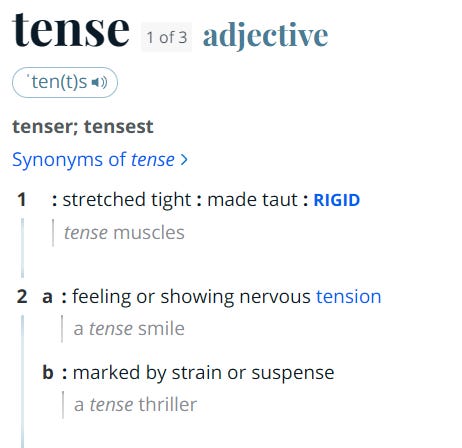The Minnesota Vikings Displayed Their Tell-Tale Hearts Against the Ravens
Matt Fries digs into the nearly unprecedented false start problem the Vikings experienced at home against the Ravens
Edgar Allan Poe (1809-1849) was an American author famous for his poetry and short stories. Born to a pair of actors, Poe’s father abandoned his family soon after, and Poe’s mother died of tuberculosis before Poe reached the age of 3. At that point, Poe was fostered by John and Frances Allan, a successful merchant family from Richmond, Virginia.
Poe’s upbringing included studying in Scotland and England, as well as a brief stint at the fledgling University of Virginia. While Poe’s foster father was a man of means, their relationship was contentious, and Allan never officially adopted Poe.
This meant that, despite having a fairly educated background, Poe didn’t have the independent wealth that many famous authors and scientists from that time leveraged to fund their endeavors. Poe had a couple of military stints, but mostly bounced around as an editor at different publications. Because of this, he is considered one of the first Americans to earn a living exclusively through writing [Ed. Note: Please support those of us who earn a living exclusively through writing!]
Just scraping by, Poe purportedly struggled with gambling debts and alcoholism. His macabre style makes him one of the most well-recognized figures in Gothic fiction. He lived in Richmond, Philadelphia, and New York throughout his life, but is most closely associated with the city of Baltimore, where he first saw his works printed and where he eventually died in 1849.
Poe’s biggest success during his writing career was a poem titled “The Raven,” released in 1845. 150 years later, when then-Cleveland Browns owner Art Modell announced that he was moving the team to Baltimore, the team held a contest to determine its new nickname, and fans chose the Ravens as a nod to Poe’s poem.
Fast forward to 2025, and those Ravens played the Minnesota Vikings this past Sunday. I’m not sure Poe would have been a football fan, as there’s no record of any particular interest in sports. Still, his penchant for scathing criticism may have drawn him to write about the Vikings.
The Vikings grew more and more disjointed as the game went on. After jumping out to a 10-3 lead, three Vikings turnovers let the Ravens take a 19-10 lead. Suddenly, everything felt tense for the Vikings’ offense. That tension manifested in six second-half false starts, giving the Vikings eight total false starts in the game.
Generating eight false starts is absolutely comical, especially at home. On the week, the second-highest total for an individual team was three, so the Vikings more than doubled that number. So far this season, the second-highest number of false starts a team has committed is five, which has been done four times, including by the Vikings themselves in Week 3 against the Bengals.
The Tension That Created 8 False Starts
ESPN research indicated that only two teams have committed eight or more false starts at home this millennium: the St. Louis Rams, with eight in 2005, and the Buffalo Bills, with nine in 2009.
Frustrating is a great word to describe how the Vikings’ 4-5 season has gone so far, but that’s a results-based descriptor. If I had to describe the fanbase’s mood around the Vikings, I think the best word is tense.
Tension is something that Poe was intimately familiar with, and it was something he was a master at building through his storytelling. This mastery is evident in one of Poe’s most famous works, the short story “The Tell-Tale Heart.”
In the story, tension — or nervousness, as the first-person narrator terms it — drives the main character to murder an old man, and later admits the crime to investigating police officers despite initially offering a convincing alibi.
That tension also characterizes the state of a football offense before the start of a play. Prior to the snap, all players on the offense (with the possible exception of one backfield player, who is allowed to be in motion) must be set for at least one second.
Per the NFL rules, any sudden or abrupt movement from a set player prior to the snap is considered a false start. Offensive players must maintain rigid (or, in other words, tense) positions until the ball is snapped.
It’s also reasonable for players to feel the second definition of tense, nervousness, prior to the snap. It starts with the stance. It’s difficult to hold still in any position for an extended period of time, but players have to be ready to explode out of their stance.
Stance is critical for players running their 40-yard dash at the combine, as proper form can shave seconds off their time. However, it also matters in live NFL play, when it can help provide receivers a good release against press coverage or blockers with good leverage or angles when blocking. It’s certainly harder to hold a stance that leads to explosive athletic movement than it is to sit still in a chair.
Then, there’s the mental checklist each player has to go through before the snap. Defensive alignment can determine the blocking scheme or route used, so all offensive players must accurately diagnose those keys to execute a successful play. This is complicated by the fact that the defense is allowed to move freely, so shifts in response to the offense’s formation or motion increase the mental load. While you’re figuring that out, the QB is also allowed to make adjustments based on that picture, so you have to listen to him to see if your responsibility has changed.
With all that going on, you also have to be prepared for what’s next. As a lineman, you have to be ready to block another massive, strong human being coming at you full force. As a receiver, you have to run a precise route and hopefully fool the defense to get in a spot on time for the QB to deliver the pass. With all that going on, it makes sense to be a little tense.
The offense has one final big advantage, and that’s knowing when the play will start. Everyone goes on a predetermined count. The defense will react quickly, so offensive players need to move as fast as possible after the ball is snapped, and therefore need to be attentive to the snap count. With such a fine line between being loaded in your stance and exploding out at the snap, it’s a testament to the discipline of NFL players that they don’t false start more often (historically, teams average about 1.24 false starts per game).
On Sunday, the Vikings let that tension — that nervousness — control them. They got overwhelmed before the snap and consistently false started. There were several reasons for their individual false starts, but one was simply flinching at a combination of J.J. McCarthy’s hard count and defensive movement.
In “The Tell-Tale Heart,” Poe’s narrator prides himself on his ability to move with great care and stay still. Despite the nervousness he felt, he remarked on his ability to stay still through terror:
But even yet I refrained and kept still. I scarcely breathed. I held the lantern motionless. I tried how steadily I could maintain the ray upon the eye. Meantime the hellish tattoo of the heart increased. It grew quicker and quicker, and louder and louder, every instant. The old man’s terror must have been extreme! It grew louder, I say, louder every moment!—do you mark me well? I have told you that I am nervous: so I am. And now at the dead hour of the night, amid the dreadful silence of that old house, so strange a noise as this excited me to uncontrollable terror. Yet, for some minutes longer I refrained and stood still.
In the game, the Vikings lined up, and they stayed still. They motioned, and they’d stay still waiting to hear the correct cadence to initiate the snap. McCarthy would hard count, and then it would go off the rails.
And now a new anxiety seized me—the sound would be heard by a neighbor! The old man’s hour had come! With a loud yell, I threw open the lantern and leaped into the room.
As McCarthy hard-counted, defenders would sometimes flinch in response. This is allowed, but the tension from Vikings players caused them to flinch in response, just like the narrator in the story. I think three of the false starts were examples of this.
Why Did Each False Start Happen?
Ben Yurosek’s false start was chronologically the first. As the Vikings motion Jefferson across the formation, the Ravens roll their safeties to that side, with Kyle Hamilton coming down towards the line of scrimmage. The defensive movement and McCarthy’s hard count, with the loud “set HUT,” [A/N: turn the sound on for these videos], made the rookie move early:
A few drives later, Justin Jefferson made a similar error. The play below appears to be a run call, which means that Jefferson likely has a crack blocking assignment inside, potentially against the edge rusher, Kyle Van Noy.
As McCarthy hard counts, you see Van Noy flinch, and Jefferson moves ever so slightly in response to that. I don’t think there’s any reason to believe the Ravens were intentionally making movements or calls to try to force a false start, which there has been some conversation about based on an Aaron Jones quote.
Keep reading with a 7-day free trial
Subscribe to Wide Left to keep reading this post and get 7 days of free access to the full post archives.





